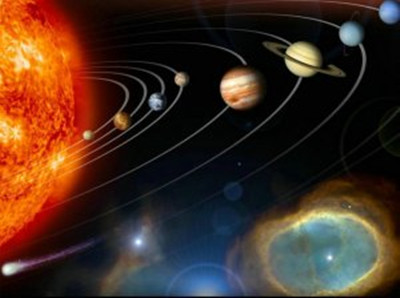Vesta is quite far away.
灶神星距地球的距離很遠。
Like many asteroids, it has an orbit out between the orbits of Mars and Jupiter.
像其它許多小行星一樣,它在火星與木星之間有自己的運行軌道。
Astronomers first spotted it when looking for a new planet they thought should exist between these two.
天文學家們首次發(fā)現(xiàn)它時是在尋找介于這兩大行星間的另一個行星。

As I said, Vesta is quite small–about three hundred and twenty-five miles across.
正如我所說,灶神星是很小的—它的直徑也就只有325英里而已。
So if it’s small and far away, how come we can see it from here?
那問題就是,它又小,距離我們又遠,我們怎么能從地球上靠肉眼就看到它呢?
Vesta’s surface has a coating of pyroxine and olivine, two minerals that are actually also spewed up by volcanoes here on earth.
在灶神星的表面覆蓋了厚厚的一層玄武巖和橄欖石,這兩種礦物質(zhì)都是由此處的火上噴發(fā)而出的。
They give it a whitish exterior that reflects well, making it just possible to see Vesta with your eyes, even when the only two larger asteroids, Ceres and Pallas, are completely invisible.
這兩種礦物質(zhì)使得灶神星的表面呈白色,且發(fā)光的效果相當好。如此一來,我們便僅憑肉眼就可以看到灶神星了。甚至在比它還大的另外兩個小行星——谷神星和智神星都無法看到的情況下,我們還是能看到它。











